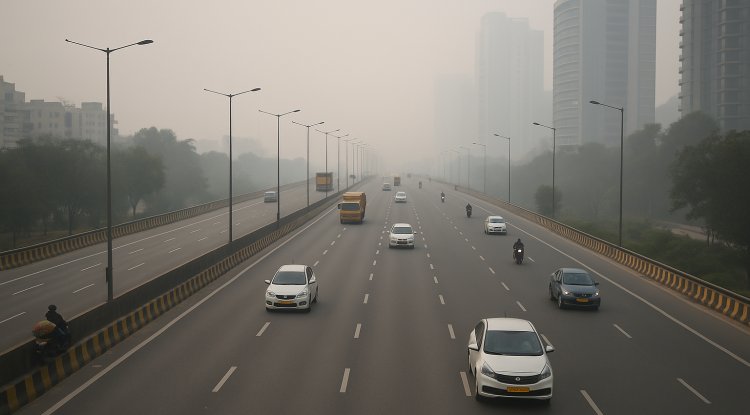Extreme Heat Drives Higher Wildfire Risks Globally
Extreme heat and climate change are increasing the risk and intensity of wildfires globally, with rising temperatures drying landscapes and creating ideal fire conditions, highlighting the need for stronger mitigation and forest management strategies.

Extreme heat, fueled by global warming, is more and more being seen as one of the main causes of the rise in apocalyptic wildfires around the United States and the world at large. Summer 2025 has already seen new record highs in the US, from the Pacific Northwest to New England, with a very grave public health impact as well as exacerbating conditions that are conducive to massive wildfires.
Hot weather is the cause of arid land, and it is good conditions under which wildfires can readily occur and spread widely. The problem is exacerbated when drought, wind, and human carelessness are also involved. Global warming, which is driven by greenhouse gases resulting from the burning of fossil fuels, is making these conditions worse by releasing the number and intensity of heatwaves and altering rainfall patterns.
Recent climate studies indicate that while the number of wildfires in some areas has remained stable, the size and destructiveness of fires have grown over the past two decades. Warmer temperatures have led to greater evaporation rates, which in turn dry out vegetation and soil, leaving behind flammable fuel that can easily ignite. This cycle makes it more likely that fires, once started, will burn hotter and spread faster than in previous years.
Among the measures taken by scientists to estimate fire conditions is the Fire Weather Index (FWI), which takes into consideration temperature, wind, humidity, and other climatic factors to forecast the likelihood and possibility of intensity of wildfires. This system was most recently used for the January 2025 Los Angeles region wildfires. The area had not seen any precipitation since May of 2024, and a high-risk system included strong seasonal winds along with dry brush. Anthropogenic climate change increased fire conditions intensity by approximately 6% and made them 35% more likely compared to pre-industrial climate conditions, according to data from FWI versus historical records.
Similar findings were reported for the South Korean March 2025 wildfire that killed more than 30 people. Research suggests that climatic change has made weather circumstances that ignited those fires roughly twice as likely to have happened as they would have been in a cooler world.
This relationship between fire and wildland fire danger is additionally complicated by the fact that the majority of wildland fires in the United States are human-caused. There are faulty power lines, campfires, and smoldering cigarettes that initiate fires, mostly in remote or rural areas near forests or wildlands. These areas, described as the wildland-urban interface, become more of a problem with invading growth and development surrounding burnable landscape.
Methods to control the risk of wildfire incorporate preventive and responsive measures. Woodland management is probably the best preventive method. It includes thinning overcrowded stands of timber and prescribed burning. The prescribed burns destroy dead plant material that would otherwise be fuel during a wildfire season. Healthy forests are less prone to cultivate raging fires and can act as natural firebreaks against the spread of fire.
Apart from increasing wildfire threats, there have also been efforts on the side of United States legislation to increase resilience in forest-edge communities. Efforts being suggested include funds and support for fire-resistant building materials, retroactive in-place home hardening, and awarding defensible space near buildings. This is especially necessary where there is limited evacuation or where there is limited fire capability.
Even with improved weather forecasting, it is still hard to determine where and from where the next big wildfire will happen. Forecasters track drought, soil moisture, and air currents to predict peril but cannot anticipate specific human-ignited event occurrences. Satelite tracking and modeling technology has improved early warning systems and response effectiveness for most of the higher-risk regions.
The long-term prognosis is that climate change will continue to augment the threat of wildfires until major global action is taken to mitigate greenhouse gas emissions. The link between intense heat and the intensity of wildfires is solidly established, and if there is no mitigation, both in land use policy and land management, the extent and severity of wildfires are likely to grow.
Globally, the phenomenon is not American. Nations with fire-prone environments, such as Australia, Canada, Greece, and portions of Africa and Asia, are experiencing more frequent and severe fires. Globally, the reaction is not only in adaptation and response measures, but in climate policy to mitigate the sources of climate change by restraining the use of fossil fuels and setting a limit on temperature rise.
The interplay of rising temperatures, higher evaporation, and atypical weather is a multifaceted challenge for emergency managers, policymakers, and communities. Ongoing investment in data collection, prevention of wildfires, public awareness, and climate resilience will be needed to address these rising threats. Mitigation of extreme weather and wildfire danger cannot be evaded, but planning ahead and sustainable land use will minimize the devastation from wildfires in the future.
Source: Thomson Reuters Foundation
Published on: 4 July 2025
Credit: www.context.news | Image credit: Government of Alberta, CC BY-SA 3.0, via Flickr
What's Your Reaction?

















